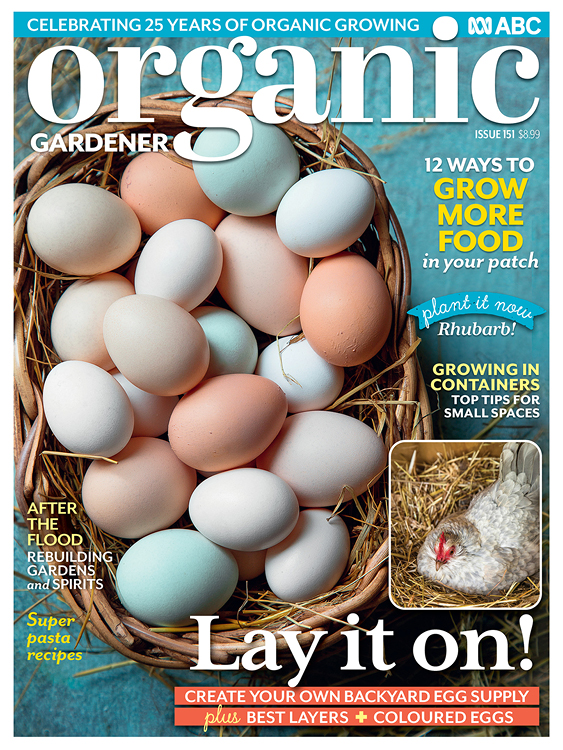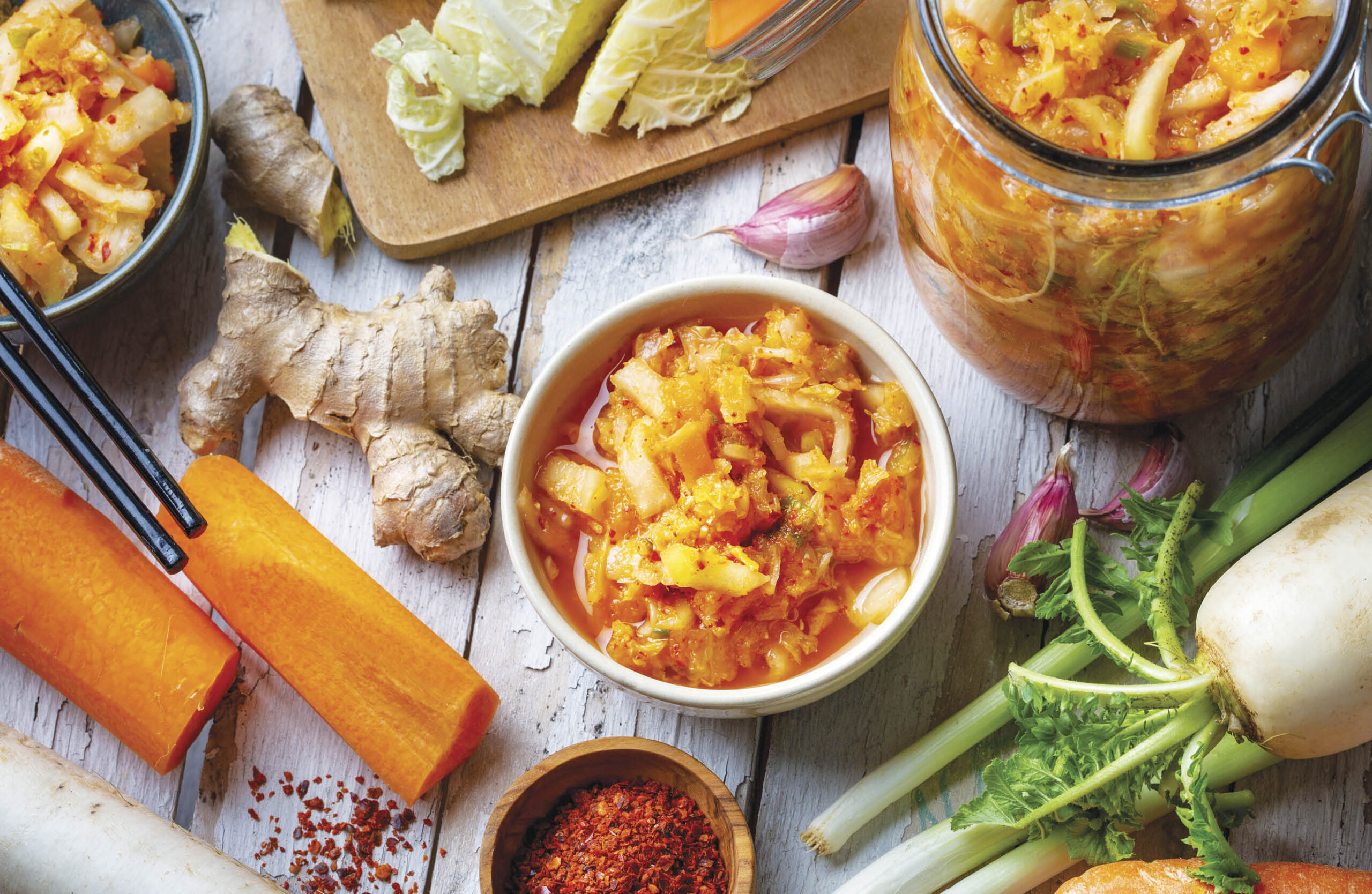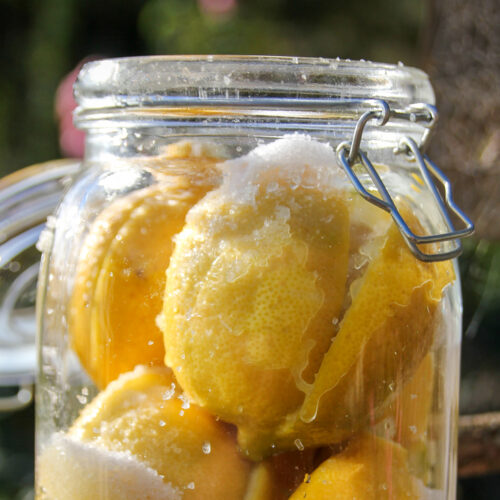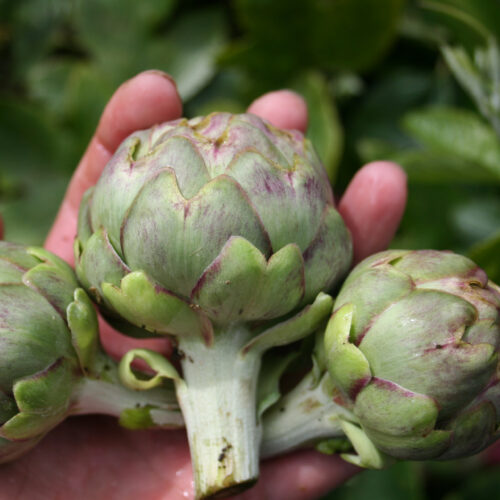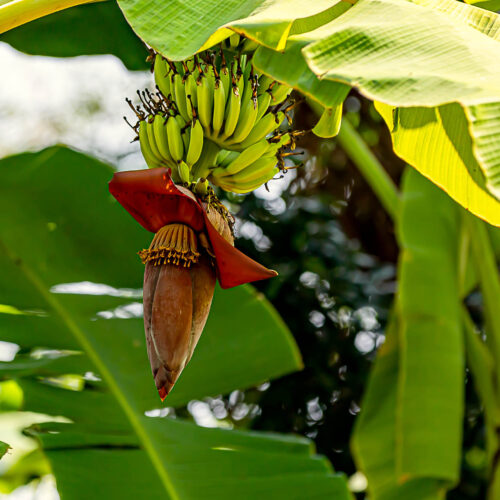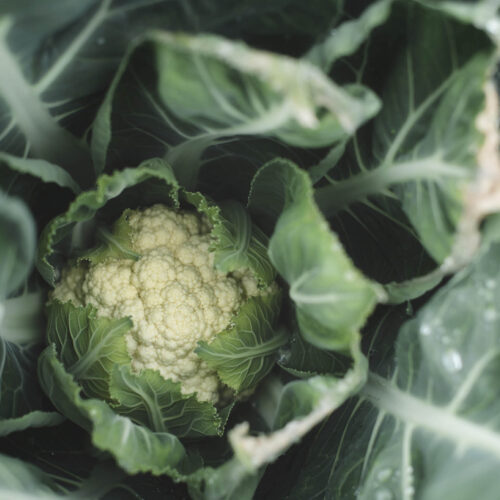Make your own kimchi
2025-03-10T13:05:26+11:00
You can grow many of the ingredients for kimchi in your garden and then make your own with this recipe.
Back in the early ’90s, I was studying horticulture at Grovely TAFE in Brisbane. My wife and I rented a house in Kangaroo Point, on a busy main road, just off the Story Bridge. Our landlords were a lovely Korean family who lived next door. They were very friendly and kind, and shared much of their culture with us, including their delicious food! One of the greatest things Mrs Hong shared with us was her method for making kimchi. We still use this recipe today, and it always fills us with so many lovely memories.
What is kimchi?
Kimchi is a traditional Korean side dish of fermented vegetables commonly including wombok (napa cabbage), daikon radish, garlic and spring onions. “There are many variations of kimchi, but the main fresh ingredient is wombok (Chinese cabbage),” Jian Liu explains. You can then add garlic, spring onion, ginger, chilli and daikon radish, depending on your recipe.
Mrs Hong’s kimchi recipe
1 wombok cut lengthwise then across in 3cm strips
1–2 cups of salt, plus extra
2 onions
5–6 green onions
5 large cloves of garlic
3cm piece of ginger
½ cup fish sauce
5 dessert spoons of Korean chilli powder
1 tablespoon sugar
- Salt the wombok liberally and leave it in a large container for 1½ hours. Rinse twice and squeeze out the excess moisture.
- Chop onions and green onions, mince garlic and ginger, mix them together, and add the fish sauce.
- In a large container, add the onion/garlic/ginger mixture, wombok, chilli powder, sugar and 2 teaspoons salt and mix thoroughly, massaging it with your hands (avoid touching your eyes!!).
- Transfer this to a sterilised large jar/s, push the cabbage down firmly so that it is all submerged beneath the liquid, put a lid on loosely, let it sit somewhere in the kitchen for 2–3 days to ferment (put a plate underneath to catch any escaping fluid), then refrigerate. It will keep a few months in the fridge.
You can learn more about growing the ingredients for kimchi in our Winter 2024 issue (OG 150). You can subscribe to the magazine or get back issue copies here.
